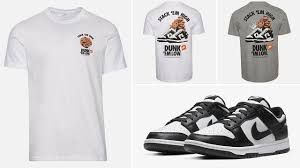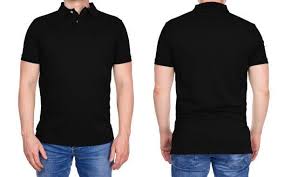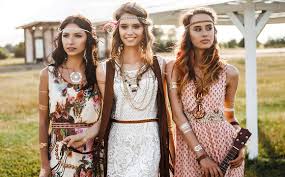The Origins of Animal Print Fashion
The animal print dress has a fascinating history rooted in luxury, symbolism, and bold self-expression. Animal skins and furs were once worn by ancient tribes as a display of strength and survival. Throughout history, kings, queens, and aristocrats incorporated animal-inspired designs into their wardrobes as symbols of wealth and authority. Leopards, cheetahs, zebras, and tigers became associated with exoticism, power, and mystique. By the 18th and 19th centuries, European fashion houses began experimenting with printed fabrics that imitated these patterns, making the look accessible to those who wanted the exotic aesthetic without actual fur. The animal print dress soon transitioned from royalty to mainstream fashion, becoming an emblem of daring style.
The Evolution of Animal Print Dresses Through the Decades
The early 20th century brought a new wave of fashion influenced by cinema and Hollywood glamour. Stars like Eartha Kitt and Marilyn Monroe popularized leopard and cheetah prints in the 1940s and 1950s, transforming animal print dresses into an image of allure and sophistication. The 1960s and 1970s embraced bolder, psychedelic interpretations of animal prints, aligning with the rebellious counterculture. In the 1980s, power dressing emerged, and designers incorporated oversized zebra stripes and leopard spots into dresses that exuded confidence and authority. The 1990s softened the look, making the animal print dress a staple in casual and grunge-inspired wardrobes. Entering the 21st century, fashion houses such as Roberto Cavalli, Dolce & Gabbana, and Versace elevated animal print dresses into luxury statements, ensuring their presence on red carpets and runways worldwide.
Why the Animal Print Dress Remains Popular
One of the reasons animal print dresses remain timeless is their versatility. The patterns are instantly eye-catching, flattering a wide variety of body shapes and personal styles. Leopard print, for example, is considered a neutral pattern, meaning it can be paired with multiple colors and accessories while still maintaining elegance. Beyond versatility, the animal print dress represents confidence. Wearing one signals boldness, self-assurance, and a willingness to stand out. Whether styled casually with sneakers or elevated with high heels and statement jewelry, animal print dresses transition seamlessly from day to night. This adaptability ensures they remain a staple piece in women’s wardrobes across generations.
Types of Animal Prints in Dresses
Different prints carry different moods and fashion statements. Leopard print is the most classic, often seen in both casual and high-end designs. Cheetah print features smaller, more delicate spots, creating a subtler effect. Tiger stripes exude strength and fierceness, making them popular for eveningwear and statement outfits. Zebra print is bold and graphic, perfect for modern, high-fashion looks. Snake print carries an exotic edge, frequently used in bodycon or fitted dresses for a sleek and sultry vibe. Designers often blend or reinterpret these prints, offering modern twists such as neon zebra stripes or metallic leopard patterns.
How to Style an Animal Print Dress
Styling an animal print dress requires balance. Since the print itself is visually striking, it’s often best paired with neutral accessories such as black heels, beige coats, or simple gold jewelry. For casual occasions, a leopard print slip dress can be paired with white sneakers and a denim jacket for effortless chic. For office wear, a midi-length animal print dress can be layered with a tailored blazer and pumps, offering a balance of professionalism and style. Evening events allow for more dramatic styling—think bold earrings, stiletto heels, and a clutch bag to complement the dress’s pattern.
Celebrity Influence on Animal Print Fashion
Celebrities have played a major role in maintaining the popularity of animal print dresses. Icons like Kate Moss, Beyoncé, Kim Kardashian, and Rihanna have all championed animal print in their red-carpet and street-style looks. Their influence extends to fashion lovers worldwide, inspiring designers and consumers alike. Social media has only amplified this effect, with influencers showcasing animal print dresses in creative, trend-forward ways. This digital visibility ensures that the style never fades into obscurity, instead reinventing itself each season with new colorways, silhouettes, and textures.
Animal Print Dresses in Modern Fashion Trends
Today’s fashion industry continues to embrace animal print dresses in innovative ways. Sustainable fashion has led to the use of eco-friendly fabrics and ethical production, ensuring the bold patterns remain accessible while reducing environmental impact. Runway shows regularly feature experimental designs such as mixed prints, oversized silhouettes, and sheer layering with animal motifs. Online platforms such as Vogue often highlight animal print as a recurring seasonal trend, showcasing how designers merge traditional patterns with modern aesthetics. From fast fashion retailers to luxury labels, the animal print dress consistently holds its place as a must-have piece.
Psychological Impact of Wearing Animal Print
Fashion is not only about appearance; it also influences psychology. Studies suggest that wearing animal prints can enhance confidence and self-expression. The boldness of leopard spots or zebra stripes communicates assertiveness, independence, and sensuality. This psychological boost is one reason many people reach for an animal print dress when they want to feel empowered. On a subconscious level, the wild patterns connect the wearer to primal instincts and natural strength, reinforcing the perception of power and allure.
Choosing the Right Animal Print Dress for Your Body Type
Selecting an animal print dress that flatters your body type can enhance both style and confidence. Petite women may prefer smaller prints like cheetah spots to avoid overwhelming their frame. Curvier body types often shine in bold leopard or zebra prints that accentuate natural curves. Tall women can experiment with long, flowing maxi dresses in animal print for a dramatic effect. The cut also matters—wrap dresses create an hourglass silhouette, while shift dresses offer relaxed comfort. Fabrics like silk add elegance, while cotton brings casual ease.
Animal Print Dresses for Different Occasions
One of the greatest advantages of animal print dresses is their ability to suit multiple occasions. For a casual brunch, a short leopard print dress paired with sandals offers an effortlessly stylish look. At work, a knee-length zebra print dress layered with a blazer strikes a balance between professional and fashionable. For evening parties, a bodycon snake print dress paired with heels creates a sultry, high-impact statement. Even weddings and formal events now embrace animal print, with sophisticated designs featuring muted tones, lace overlays, and elegant cuts.
The Future of Animal Print in Fashion
Looking ahead, the animal print dress will continue to evolve alongside shifts in fashion and technology. Designers are experimenting with digital prints, 3D textures, and augmented reality-inspired patterns. Sustainability will play an increasingly important role, with eco-friendly dyes and recycled fabrics shaping future designs. Online platforms such as Elle forecast animal print’s continued dominance in seasonal collections, emphasizing its timeless appeal and ability to adapt to cultural changes. As trends come and go, animal print endures as a symbol of daring elegance, ensuring its place in fashion for decades to come.












